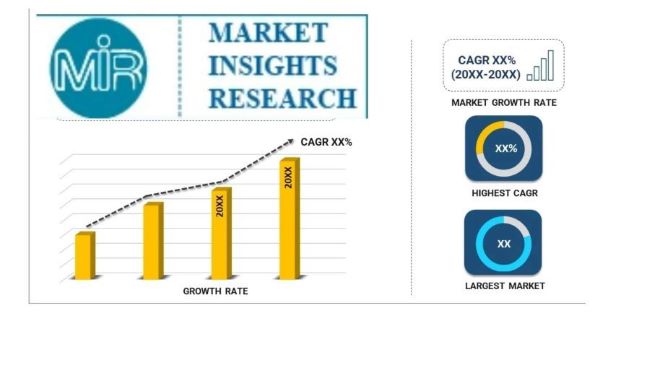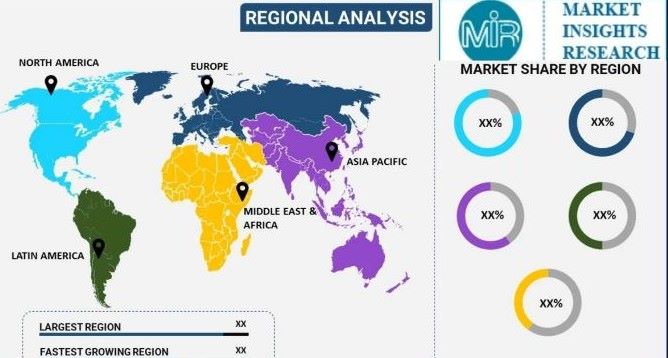The United States meat market is expected to be driven in the forecast period due to several factors, such as changing consumer preferences and dietary choices and the ease of product availability. These factors increase the demand for food products like meat.
United States Meat Market Scope
The term "meat" refers to the flesh of various animals including chicken, beef, pork, mutton, and others, which can be consumed as a part of a balanced diet. For many Americans, meat is a significant source of essential nutrients, including high-quality proteins, iron and B vitamins.
United States Meat Market Overview
The sales of the meat market in the United States have experienced growth over the forecast period due to various factors, including health and nutrition considerations, consumer preferences, price considerations, and convenience. The convenience of online shopping and food delivery services has contributed to increased meat sales through e-commerce platforms. Consumers appreciate the ease of ordering meat products online and having them delivered to their doorstep.
Beef holds significant importance in the United States meat market. The United States ranks among the largest beef producers globally, with beef production and consumption deeply rooted in American culture. The country's extensive cattle ranches and feedlots support a vast beef supply chain that caters to both domestic and international markets. Additionally, pork is another prominent meat category, with the US being a leading global producer and exporter of pork.
Drivers of the United States Meat Market
The demand for the meat market in the United States is driven by several factors, including the increasing consumption of meat among the population and changing dietary preferences, such as the popularity of high-protein diets. For instance, in 2022, according to the US Department of Agriculture (USDA), beef consumption in the United States reached 58.9 pounds. Similarly, in 2021, beef consumption in the United States amounted to 30 billion pounds, reflecting an 8.7 percent increase from 2020. The market's growth can be attributed to the rising year-on-year beef consumption in the country.
Changing dietary preferences also play a significant role in increased meat consumption. Certain diets and lifestyle choices, such as high-protein diets or the popularity of specific food trends, have contributed to a preference for meals rich in meat. Additionally, cultural and social factors have traditionally played a crucial role in the prominence of meat in American diets. Meat has been a staple in various regional cuisines and traditional dishes, becoming deeply ingrained in the country's culinary heritage.
Furthermore, the growing number of slaughterhouses in the United States has directly affected meat market sales. According to the US Department of Agriculture (USDA) in 2022, there are 2,785 slaughterhouses in the country dedicated to red meat production. Consequently, the convenience and widespread availability of meat products have impacted individuals' consumption patterns. Fast-food chains, restaurants, and supermarkets offer a wide variety of meat options, making it convenient for consumers to regularly incorporate meat into their diets.
United States Meat Market Trends
In recent years, the market has witnessed noticeable trends in the meat industry. The growing awareness about health and well-being among the American population has led to an increased demand for protein-based products. The lifestyle of the working class in developed countries has resulted in a preference for processed products over conventional ones. Furthermore, the rising number of fitness enthusiasts in the United States has also contributed to the surge in meat consumption during the forecasted period.
Technological advancements have also had a profound impact on the meat market, particularly in the realm of e-commerce and online retail. The convenience of online shopping and food delivery services has led to increased meat sales through e-commerce platforms. Consumers appreciate the ease of ordering meat products online and having them delivered directly to their doorstep, facilitating accessibility and reducing the need for in-store visits.
Additionally, ready-to-cook and convenience meat products have also seen significant growth in response to consumers' busy lifestyles and desire for quick and easy meal solutions. Pre-seasoned and prepped meat products, sous vide and oven-ready options, and portion-controlled servings provide consumers with time-saving and hassle-free cooking experiences, significantly contributing to market growth during the forecasted periods.

Challenges in the United States Meat Market
The significant challenges in the United States meat market include the reformulation and reduction of sodium, as well as the replacement of additives such as nitrite and preservatives. For instance, in October 2021, the U.S. Food and Drug Administration (FDA) released voluntary guidance to the food industry to reduce sodium levels in commercially processed, packaged, and prepared foods in order to reduce excessive sodium intake among the United States population. Salt accounts for approximately 90% of the sodium present in human diets and is necessary for the preservation of cell membrane potential and nutrient absorption in the small intestines.
Excessive consumption of sodium has been associated with adverse health outcomes such as an increase in blood pressure. The new guidance outlines various short-term sodium reduction targets for certain categories of meat products, such as aiming for a sodium level of 860-980 mg per 100 g of deli meats and a sodium level of 1,570-1,570 mg per 100 g in bacon. The guidance states that these reduction targets must not compromise nutritional quality by increasing sugar content or affect food safety properties. All these factors pose significant challenges for formulators in the meat industry during the forecasted periods.
Additionally, the growing popularity of plant-based diets and ethical considerations have led to an increased demand for meat substitutes made from ingredients like soy, pea protein, and other plant sources. Companies offering plant-based burgers, sausages, and other products have seen remarkable growth and expanded their market presence, appealing to a broader consumer base concerned about animal welfare and the environmental impact of traditional meat production.
Recent Developments
- InAugust 2022, the company "Tyson Foods" invested USD180 million toexpand its prepared foods plant in Caseyville, Illinois, boosting production ofits iconic brand Hillshire Farm and Jimmy Dean.
- InJune 2022, the company "Hormel Foods" launched Hormel Natural ChoiceSandwich Pepperoni. This new product was created to satisfy consumers'pepperoni cravings and is 100% natural and flavorful. It features nopreservatives, except for those naturally occurring in cultured celery and seasalt, and no artificial ingredients.
United States Meat Market Opportunities
With the growing population in the country, there is an increasing demand for food, including meat products. The country's population of over 330 million provides a substantial customer base, signifying consistent demand for various meat types, including beef, pork, poultry, and lamb. Additionally, the US boasts a highly urbanized society, fueling the demand for convenient, ready-to-eat meat products such as sausages, deli meats, and pre-cooked options.
With the rising popularity of organic farming and products in the United States, brands are expected to find significant growth opportunities in the meat market. According to data provided by the US Department of Agriculture (USDA), organic products, including meat, fish, and poultry, accounted for approximately 4% of total sales in 2021. Thus, producers can shift towards organic products to not only increase sales but also create a sustainable environment throughout the country. All these elements create opportunities for the meat industry in the anticipated timeframe.
Market Segmentation
The United States meat market is segmented based on product, type, distribution channel, region, and competitive landscape. Based on product, the market is further fragmented into chicken, beef, pork, mutton, and others. Based on type, the market is divided into raw and processed. Based on the distribution channel, the market is further segmented into departmental retailers, specialty retailers, hypermarket/supermarket, online, and others.
Company Profiles
Tyson Foods, Inc., JBS USA Holdings, Inc., Cargill Meat Solutions Corp., Smithfield Foods Inc., Sysco Corporation, Hormel Foods Corporation, Perdue Farms, Inc., OSI Group, Marfrig United States Foods S.A. (National Beef Packing Company LLC), Sanderson Farms, Inc., are among the major market players in the United States meat market.
Download Free Sample Report
| Attribute | Details |
| Base Year | 2022 |
| Historical Years | 2018 – 2021 |
| Estimated Year | 2023 |
| Forecast Period | 2024 – 2028 |
| Quantitative Units | Revenue in USD Million, and CAGR for 2018-2022 and 2023E-2028F |
| Report Coverage | Revenue forecast, company share, competitive landscape, growth factors, and trends |
| Segments Covered | ProductTypeDistribution ChannelRegion |
| Regional Scope | South, Midwest, West, and Northeast |
| Key Companies Profiled | Tyson Foods, Inc., JBS USA Holdings, Inc., Cargill Meat Solutions Corp., Smithfield Foods Inc., Sysco Corporation, Hormel Foods Corporation, Perdue Farms, Inc., OSI Group, Marfrig United States Foods S.A. (National Beef Packing Company LLC), Sanderson Farms, Inc. |
| Customization Scope | 10% free report customization with purchase. Addition or alteration to country, regional & segment scope. |
| Pricing and Purchase Options | Avail of customized purchase options to meet your exact research needs. Explore purchase options |
| Delivery Format | PDF and Excel through Email (We can also provide the editable version of the report in PPT/pdf format on special request) |

Report Scope
In this report, the United States Meat Market has been segmented into the following categories, in addition to the industry trends which have also been detailed below
- United States Meat Market, By Product
- Chicken
- Beef
- Pork
- Mutton
- Others
- United States Meat Market, By Type
- United States Meat Market, By Distribution Channel
- Departmental Stores
- Specialty Stores
- Hypermarket/Supermarket
- Online
- Others
- United States Meat Market, By Region
- South
- Midwest
- West
- Northeast


